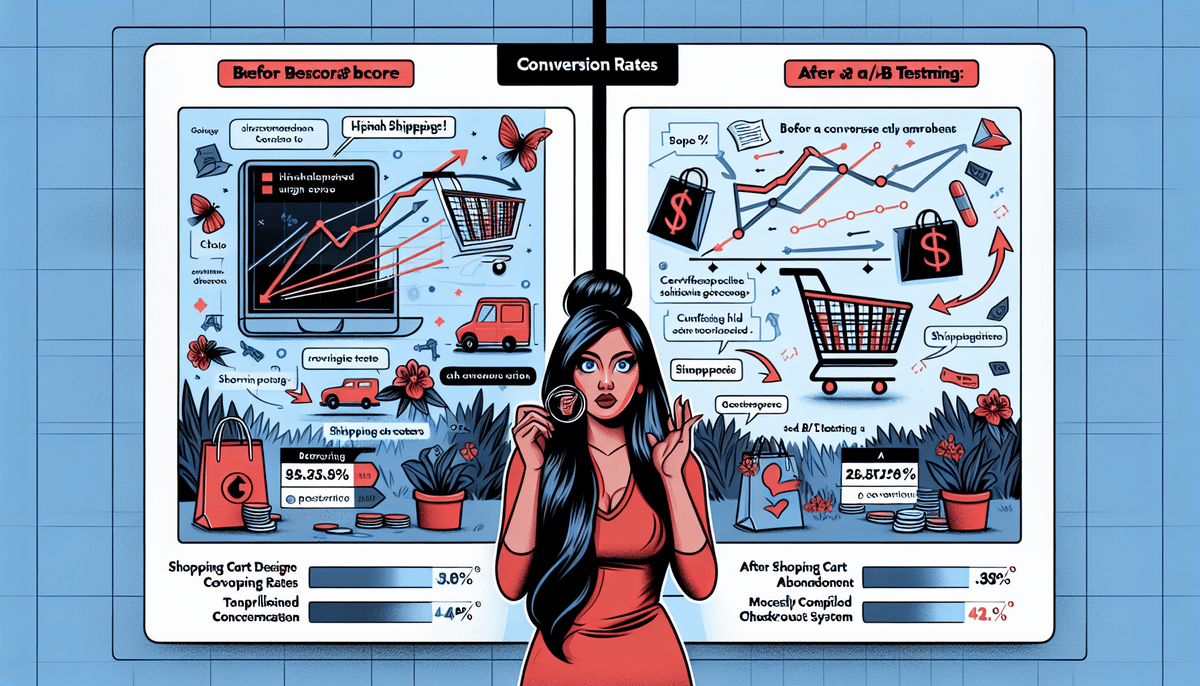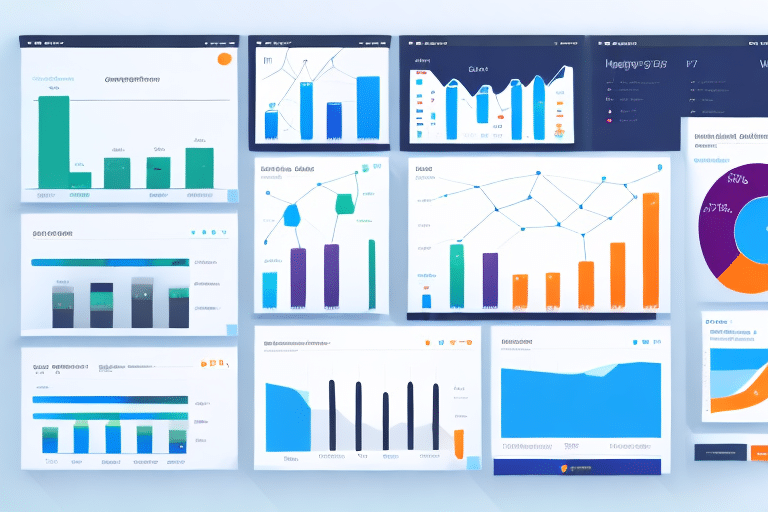Introduction to A/B Testing and Its Importance in E-Commerce
In today's fast-paced digital landscape, the e-commerce industry is expanding rapidly. Consumers increasingly prefer the convenience of online shopping, intensifying competition among online retailers. The success of an online store hinges not just on the volume of traffic, but more critically on the conversion rate – the percentage of visitors who make a purchase. A/B testing and experimentation are indispensable tools for optimizing conversion rates in any e-commerce store. This article delves into the essentials of A/B testing and explores how it can address the challenges faced by e-commerce businesses.
What is A/B Testing?
A/B testing, also known as split testing, is a method used to compare two versions of a webpage or application to determine which one performs better with respect to specific metrics, such as conversion rate. In e-commerce, this typically involves creating two variants of a web page with minor differences – for example, altering the color of a call-to-action button or repositioning a product image. By directing equal traffic to both versions and monitoring key metrics like click-through rate, bounce rate, and conversion rate, businesses can identify which version yields superior performance.
The Role of A/B Testing in E-Commerce
A/B testing empowers e-commerce businesses to make informed, data-driven decisions. According to a study by Optimizely, A/B testing can increase conversion rates by up to 49%. By systematically testing different elements of a webpage, businesses gain insights into customer preferences and behaviors, enabling them to refine their strategies for higher engagement and sales. Furthermore, A/B testing contributes to a better user experience, as changes are implemented based on actual user responses rather than assumptions.
Implementing A/B Testing: Best Practices and Strategies
Designing Effective A/B Tests
Effective A/B testing requires careful planning and a strategic approach. Here are some key considerations when designing your tests:
- Define Clear Objectives: Establish specific goals for your test, such as increasing the click-through rate or boosting the average order value. A clear hypothesis will guide the testing process and help in evaluating the results accurately.
- Select High-Impact Elements: Focus on elements that significantly influence user behavior, such as headlines, images, call-to-action buttons, and pricing. Prioritizing these elements can lead to more substantial improvements in conversion rates.
- Use Descriptive Labels: Clearly label each variant (e.g., Version A and Version B) to avoid confusion during analysis. This practice ensures that data interpretation remains straightforward and accurate.
- Limit the Number of Changes: Avoid implementing multiple changes simultaneously, as this can complicate the analysis and obscure which element contributed to the performance difference.
- Determine Appropriate Test Duration: Ensure that your test runs long enough to gather sufficient data, accounting for variations in traffic patterns such as holidays or sales events. A statistically significant sample size is crucial for reliable results.
Best Practices for Conducting A/B Tests
Adhering to best practices can enhance the effectiveness of your A/B testing efforts:
- Test High-Traffic Pages: Begin testing on pages with substantial traffic to achieve significant results quickly. High-traffic pages provide ample data, reducing the time required to reach statistically significant conclusions.
- Maintain Consistency: Ensure that external factors, such as marketing campaigns or seasonal trends, do not skew the results. Consistent testing conditions lead to more accurate and actionable insights.
- Use Reliable Testing Tools: Invest in reputable A/B testing software that offers robust analytics and real-time data tracking. Tools like Optimizely or VWO provide comprehensive features for managing and analyzing tests.
- Analyze Beyond Conversions: Consider secondary metrics such as average session duration, bounce rate, and customer satisfaction scores to gain a holistic view of the test's impact.
- Implement Winning Variants: Ensure that successful changes are permanently applied to your website and that any temporary modifications are maintained to capitalize on the improvements.
Common Pitfalls to Avoid
While A/B testing is a powerful tool, it's essential to avoid common mistakes that can undermine its effectiveness:
- Testing Too Many Variables: Testing multiple elements simultaneously can make it difficult to pinpoint which change drove the performance improvement. Isolate variables to maintain clarity.
- Ignoring Sample Size Requirements: A small sample size may not provide reliable results. Use statistical calculators to determine the required sample size for your tests.
- Running Tests for Insufficient Duration: Short-term tests may not account for variations in user behavior over time. Extend test durations to capture comprehensive data.
- Allowing External Factors to Influence Results: Events like sales promotions or website outages can impact user behavior. Ensure that such factors are controlled or accounted for during testing.
- Failing to Act on Insights: Conducting tests without implementing the insights gained leads to wasted resources. Develop a strategy to apply and monitor successful changes.
Overcoming E-Commerce Challenges with A/B Testing
Enhancing User Engagement
One primary challenge in e-commerce is capturing and maintaining the attention of online shoppers. With an average user spend of less than 15 seconds on a webpage, according to a study by Nielsen Norman Group, it’s critical to engage visitors instantly. A/B testing allows businesses to experiment with various design elements, content layouts, and interactive features to determine what most effectively captures user interest and encourages exploration.
Reducing Cart Abandonment
Cart abandonment remains a significant issue in e-commerce, with rates averaging around 69.57%, as reported by Barcouniversity. Factors such as unexpected shipping costs, complicated checkout processes, or concerns about payment security contribute to this problem. A/B testing can help identify the underlying causes by testing different checkout flows, pricing disclosures, and security badge placements to reduce abandonment rates and finalize more sales.
Optimizing for Mobile Users
With over 54% of e-commerce sales coming from mobile devices as per Statista, ensuring a mobile-friendly website is imperative. A/B testing enables businesses to evaluate different mobile designs, button sizes, navigation structures, and load times to enhance the mobile shopping experience. Optimizing these elements can significantly reduce bounce rates and improve conversion rates among mobile users.
Measuring and Scaling A/B Testing Efforts
Measuring the Impact of A/B Testing
Accurate measurement is crucial to understanding the effectiveness of your A/B testing efforts. E-commerce businesses should track both micro-conversions and macro-conversions. Micro-conversions include actions like adding an item to the cart or signing up for a newsletter, while macro-conversions pertain to final sales or completed transactions. Utilizing analytics tools like Google Analytics or Mixpanel allows businesses to monitor these metrics and assess the direct impact of the tested variations on overall performance.
Scaling Up A/B Testing Efforts
To maximize the return on investment (ROI) of A/B testing, businesses should scale their testing strategies effectively:
- Increase Test Frequency: Regularly conduct A/B tests to continually refine and optimize website elements.
- Automate Testing Processes: Utilize automation tools to streamline the testing process, allowing for more tests without additional manual effort.
- Personalize Tests: Tailor tests to specific customer segments to understand diverse user behaviors and preferences.
- Integrate Testing Tools with E-Commerce Platforms: Seamless integration with platforms like Shopify or WooCommerce facilitates efficient tracking and implementation of test results.
- Invest in Team Training: Equip your team with the necessary skills and knowledge to design, execute, and analyze A/B tests effectively.
Future Trends in A/B Testing for E-Commerce
The landscape of A/B testing is evolving with advancements in technology and data analytics. Future trends include:
- Predictive Analytics: Leveraging machine learning algorithms to predict user behavior and automatically identify the most effective webpage variations.
- Personalization: Moving beyond generic testing to create personalized user experiences based on individual user data and preferences.
- Multi-Variable Testing: Testing multiple variables simultaneously to gain deeper insights into how different elements interact and influence user behavior.
- Integration with AI: Utilizing artificial intelligence to optimize test design, execution, and analysis, making testing more efficient and insightful.
Embracing these trends can enable e-commerce businesses to stay ahead of the competition and continuously enhance the user experience.
Conclusion: Prioritizing A/B Testing and Experimentation in E-Commerce
A/B testing and experimentation are critical for overcoming the challenges inherent in the e-commerce landscape. By adopting best practices, avoiding common pitfalls, and leveraging data-driven insights, businesses can optimize their conversion rates, enhance user experiences, and ultimately, increase revenue. As the e-commerce environment continues to evolve, prioritizing A/B testing ensures that online retailers remain agile, competitive, and attuned to their customers' needs.






















